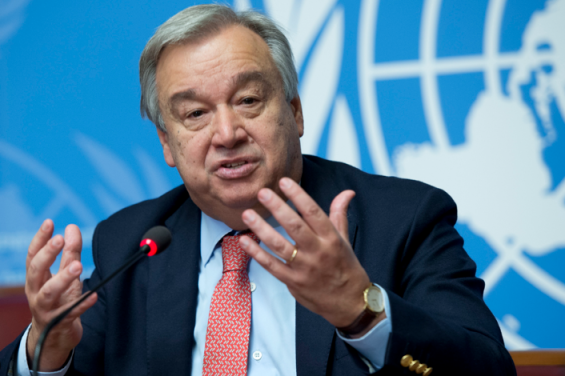On October 1, the UN Secretary-General submitted his latest report on the Sahara issue to the Security Council. In the 18-page document, consulted by Yabiladi, Antonio Guterres noted that «the situation in Western Sahara was characterised by low-intensity hostilities between Morocco and the Polisario Front». Guterres acknowledged that the political process had made «no progress, despite the continued efforts of [his] Personal Envoy for Western Sahara, Staffan de Mistura».
In summarizing key moments since the adoption of resolution 2703 on October 31, 2023, by the Security Council, the Secretary-General highlighted France’s recognition of Morocco's sovereignty over Western Sahara, Algeria's reaction, the opening of Chad’s consulate in Dakhla, and his meeting with the Polisario leader on August 31 in Dili, East Timor.
In paragraph 12, Guterres addressed «the situation on the ground,», noting that «MINURSO continued to receive reports of strikes conducted by Royal Moroccan Army unmanned aerial vehicles east of the berm». «Most firing incidents across the berm reported to MINURSO by the parties continued to be concentrated in the north of the Territory, near Mahbas», and the southeastern region near Mijek. The Portuguese diplomat acknowledged that «MINURSO was often not able to independently confirm the number and location of the reported firing incidents and their impact remained the subject of divergent claims by the parties».
The Secretary-General revealed in paragraph 13 that, after visiting sites adjacent to the berm, MINURSO «observed traces of exploded mortar ammunition», adding that most firing incidents verified by MINURSO landed in remote areas, without causing significant damage.
This passage contradicts Polisario’s daily communiqués, which often hail the «losses suffered by the FAR» following attacks by its armed elements.
Polisario continues to restrict MINURSO flights
In paragraph 22, the Secretary-General reports that the UN mission has also investigated alleged airstrikes east of the berm. Most of the strikes investigated caused human casualties and material damage, with the most targeted area being near the Mijek observation point,
Antonio Guterres reported that between October 2023 and August 2024, peacekeepers conducted «9,049 visits to FAR headquarters, units, sub-units, rear bases, and observation posts. For their own safety, UN military observers continued to be advised by Morocco not to visit forward units without an FAR escort». During the same period, MINURSO carried out «140 aerial reconnaissance flights» over positions held by the Royal Armed Forces.
However, «east of the berm, MINURSO conducted a total of 1,392 patrols, covering an area of 46,597 kilometers. Nevertheless, the Polisario Front continues to restrict MINURSO’s movements to a 20-kilometer radius from each observation point... Helicopter reconnaissance flights have not been permitted east of the berm since November 2020», the UN Secretary-General’s report reads.
In paragraph 43, Antonio Guterres deplores the Polisario’s refusal to meet with the MINURSO force commander. «All communications are via written correspondence». Nonetheless, he welcomed the resumption in 2024 of contacts with «liaison officers of the Polisario Front». These meetings took place at MINURSO observation points in Agounit, Bir Lahlou, and Mijek, he added.
The Security Council is set to review Antonio Guterres’ report in the coming weeks.




 chargement...
chargement...











